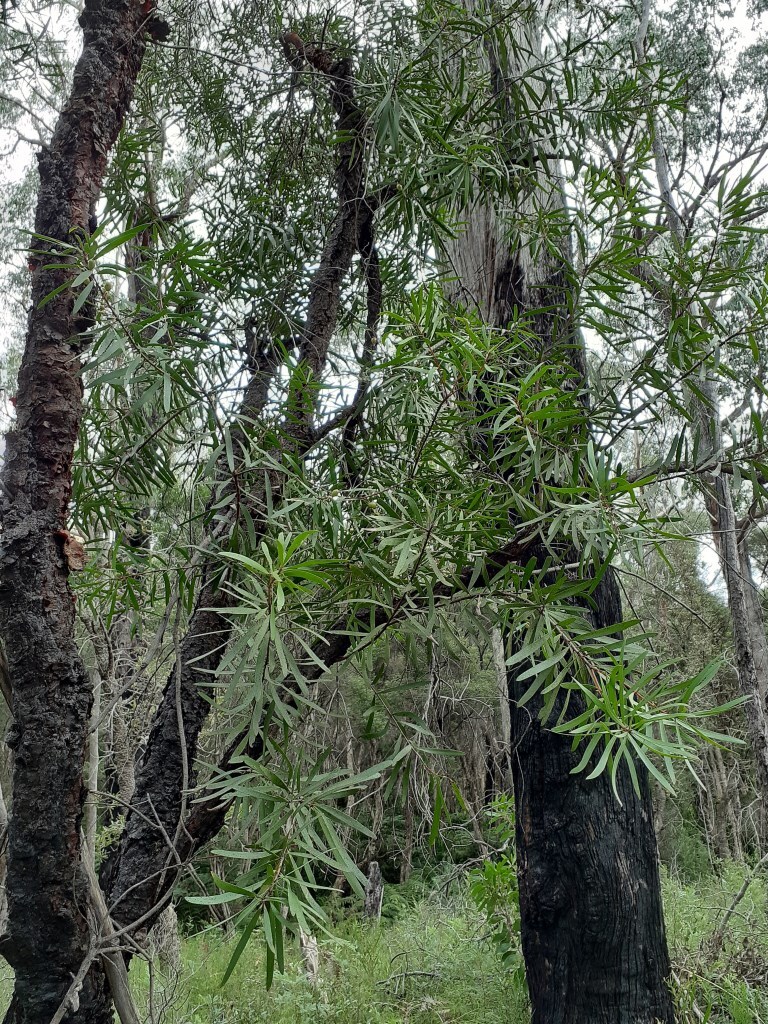Persoonia ×lucida
R.Br. Shiny GeebungErect shrub or small tree to c. 4 m high; bark lamellose-flaky; young branches moderately to densely hairy. Leaves alternate or subopposite, linear-lanceolate or oblanceolate, 5–10 cm long, 5–10 mm wide, flat, straight or curved, mucronate, bright green, smooth, sparsely to moderately hairy when young, glabrescent when mature. Flowers solitary in axils of leaves or scale-leaves; pedicels 2–10 mm long, suberect or spreading, moderately to densely hairy; tepals 10–12 mm long, apiculate or shortly caudate, glabrous to sparsely hairy, terminal spine to c. 1 mm long; anthers yellow; ovary glabrous. Drupe ovoid, to c. 10 mm long, c. 8 mm wide, green. Flowers summer.
EGL, EGU, MonT. Also NSW. Occasional on near-coastal heathlands of far East Gippsland.
This taxon is apparently a hybrid between P. levis and P. linearis with which it is always found in the field. The latter species is the female parent (Willis 1973).
Jeanes, J.A. (1996). Proteaceae. In: Walsh, N.G.; Entwisle, T.J., Flora of Victoria Vol. 3, Dicotyledons Winteraceae to Myrtaceae, pp. 830–887. Inkata Press, Melbourne.
 Spinning
Spinning